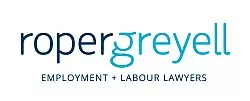Previously printed in the LexisNexis Labour Notes Newsletter.
In Re Black Press Group Ltd., BC EST No. RD074/17, the B.C. Employment Standards Tribunal confirmed that evidence of after-acquired cause (i.e. evidence of pre-dismissal misconduct discovered after dismissal) can be admitted to prove just cause under the Employment Standards Act (the "ESA") and eliminate the employer's obligation to provide termination notice or pay in lieu under the ESA.
Facts
The employer, Black Press Group Ltd., publishes a community newspaper. The complainant, Elizabeth Simmons, was employed as the paper's circulation manager. Ms. Simmons was absent from work for some time and Black Press concluded she had abandoned her position. Black Press issued a record of employment (ROE) stating that she had "quit". Black Press did not specifically assert just cause at that time. Ms. Simmons filed an employment standards complaint seeking termination pay under the ESA.
After issuing the ROE, the employer discovered evidence that indicated its former employee had stolen from the company and "committed fraud" (the details of which are not set out in the decision). At the initial ESA complaint hearing, Black Press asserted that Ms. Simmons had abandoned her employment but, even if she had not, it had just cause, after-acquired cause, to dismiss her from employment on account of the fraud and therefore owed her nothing.
The adjudicator concluded that Ms. Simmons had not abandoned her employment and, relying on earlier decisions, rejected Black Press' after-acquired cause argument, concluding that termination pay was due and payable based on the information the employer had at the time of dismissal.
Black Press successfully appealed to the Employment Standards Tribunal (the first level of appeal) on its after-acquired cause argument. The Director of Employment Standards applied for reconsideration of the Tribunal's appeal decision (a second level of appeal) on the basis that after-acquired evidence is a uniquely common law concept that is wholly inconsistent with the scheme of the ESA.
Analysis
The three-member reconsideration panel noted the longstanding acceptance of after-acquired evidence to justify dismissal at common law. The limits of permissible use of after-acquired evidence have generally been that:
(a) the evidence must concern pre-dismissal rather than post-dismissal conduct;
(b) if an employer knew of the misconduct and had expressly or implicitly condoned it, claims of after-acquired cause will be defeated; and
(c) the evidence is not simply "an excuse by an employer who is seeking to escape its contractual obligations to the former employee".
The panel's analysis turned on whether it was appropriate to import these common law principles into the analysis of just cause under the ESA. Previous Tribunal decisions were divided on this point.
The panel concluded that termination pay under the ESA and pay in lieu of notice at common law are both only payable in the event of a "wrongful dismissal" and, in the panel's view, the Legislature intended to harmonize the scheme of the ESA with some of the common law principles that govern termination pay. As one of the purposes of the ESA is to promote the fair treatment of employees and employers, it would be contrary to that purpose for an employee to be paid termination pay in spite of evidence of wrongdoing, albeit later discovered. That would allow the employee to benefit from his or her own wrongful conduct.
The reconsideration panel concluded that the relevant timeframe for determining whether the employer had "just cause" under the ESA is the point in time when the serious misconduct occurred. When that evidence is discovered by the employer is not determinative. The key question is whether the employee's serious breach of his or her employment duties or obligations occurred prior to dismissal.
The panel cautioned, however, that if the evidence of after-acquired cause is presented for the first time at a complaint hearing, the adjudicator might refuse to admit it because of considerations of adjudicative fairness or, alternatively, adjourn the hearing. If the after-acquired evidence is not tendered until after a determination is issued, the evidence would only be admissible on appeal as "new evidence".
The panel agreed with the Tribunal and concluded that the adjudicator was wrong to refuse to consider the employer's after-acquired cause evidence. This refusal amounted to a misinterpretation of the ESA and the Tribunal ordered the matter to be remitted to an adjudicator for a final decision.
Key Takeaways for Employers
This decision clarified an area of uncertainty in British Columbia's employment standards case law. It may have application in other jurisdictions too. Employers should now be more comfortable knowing that if additional evidence of pre-dismissal misconduct is discovered after termination, the employer can rely on it to establish just cause and thereby eliminate the employer's obligation to pay termination pay.
This decision's utility is, however, somewhat limited in light of the fact that termination pay is statutorily payable within 48 hours of termination except in certain limited circumstances (just cause and resignation being the two most common). This decision does not provide any basis to "claw back" termination pay already paid; it just provides a basis to challenge an employee's assertion that he or she should have been paid termination pay when he or she was not.
Employers should present any evidence of after-acquired cause as soon as it becomes available and disclose it prior to the hearing, such that the employee has an opportunity to be prepared to respond to the evidence.
The content of this article is intended to provide a general guide to the subject matter. Specialist advice should be sought about your specific circumstances.


